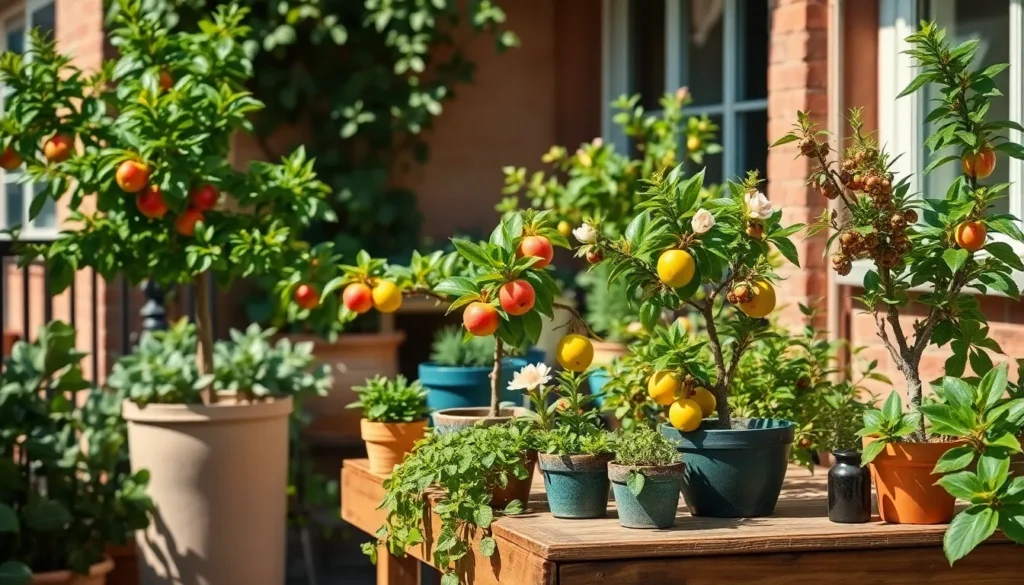Imagine stepping into your backyard and plucking a sun-ripened apple or a juicy plum from your very own tree. Whether you’re a budding gardener or a seasoned green thumb, cultivating fruit trees in small spaces is not only possible but can be delightfully rewarding. In “Top 10 Fruit Trees For Small Spaces,” we uncover the secrets to turning even the tiniest patch of earth into a bountiful orchard that bursts with flavor and freshness.
This guide is your key to unlocking the potential of compact gardening, ensuring that you can enjoy home-grown fruit no matter the size of your garden. We’ve carefully curated a selection of fruit trees that thrive in limited spaces, offering you the chance to savor the sweet taste of success. With practical tips and insights, you’ll feel empowered and inspired to transform your space into a fruitful paradise, reaping the delicious rewards of your labor.
Dwarf Meyer Lemon (Compact and Versatile)
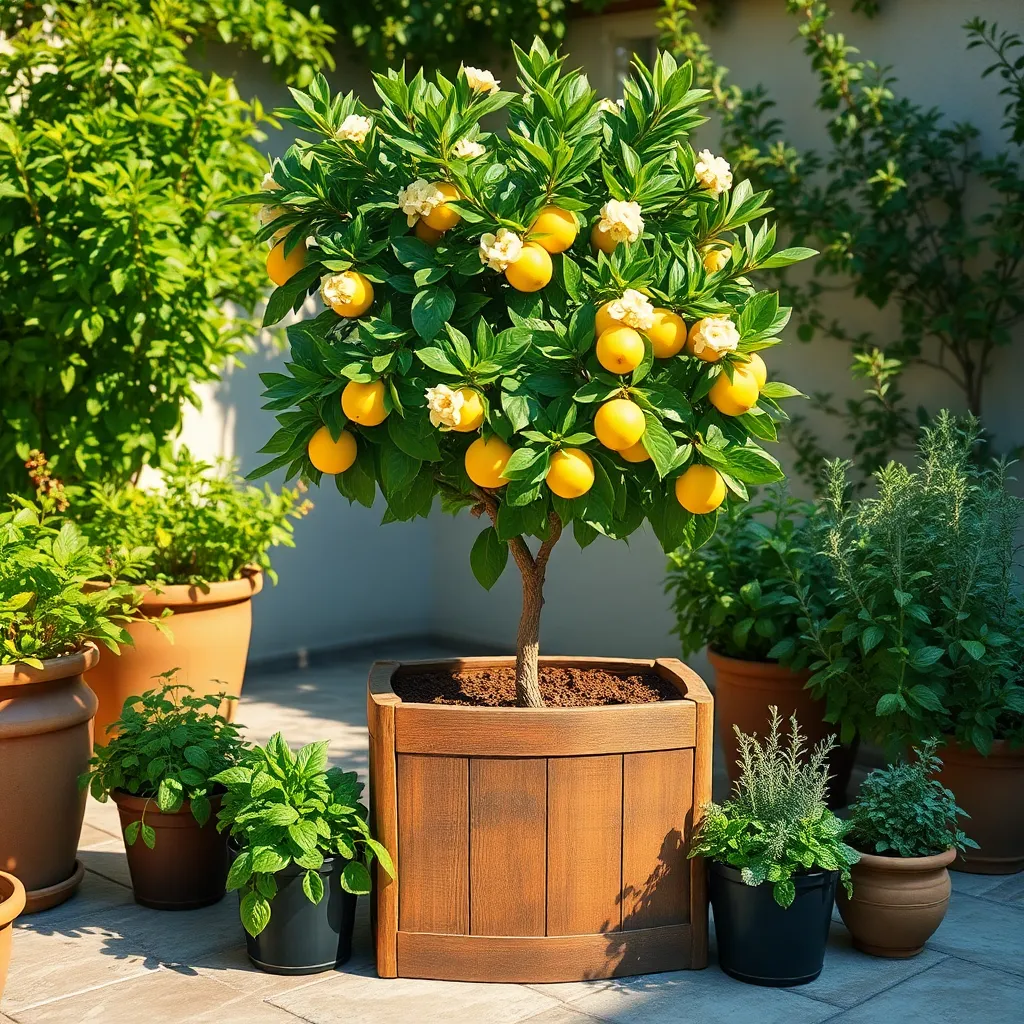
The Dwarf Meyer Lemon tree is a superb choice for small spaces, combining beauty and productivity in one compact package. Known for its versatility, this tree can thrive both indoors and outdoors, making it perfect for a variety of gardening scenarios.
For optimal growth, ensure your Dwarf Meyer Lemon tree receives at least six hours of sunlight daily. If growing indoors, place it near a south-facing window or supplement with grow lights to maintain its light requirements.
When it comes to soil, use a well-draining potting mix rich in organic matter to keep the roots healthy. Add some perlite or sand to the mix to further improve drainage and avoid root rot, especially in containers.
Watering is crucial; aim to keep the soil consistently moist but not soggy. A good rule of thumb is to water when the top inch of soil feels dry, adjusting frequency based on the climate and season.
Fertilize your Dwarf Meyer Lemon tree every few months with a citrus-specific fertilizer to encourage vigorous growth and fruit production. Pruning can also help maintain its shape and size, and it’s best done in early spring before new growth starts.
Columnar Apple Trees (Vertical Growth, Full Flavor)
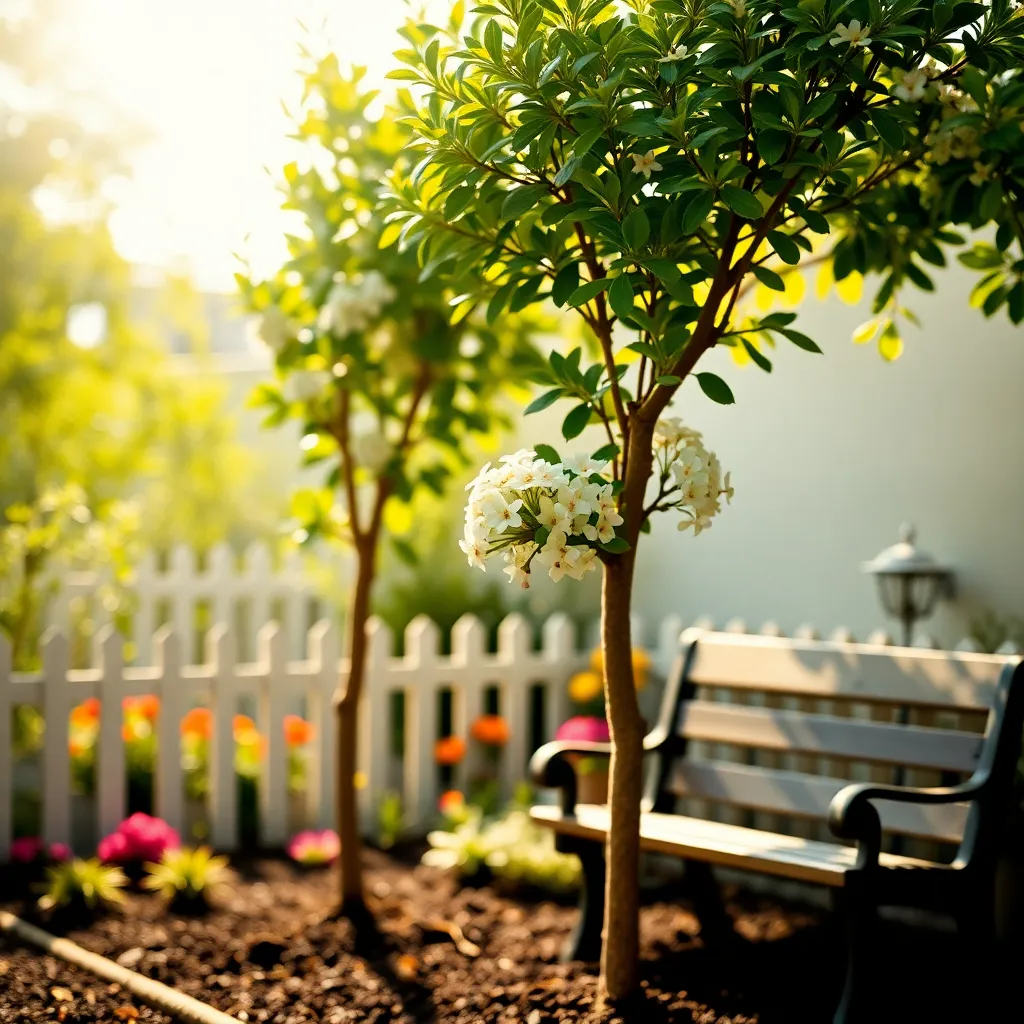
Columnar apple trees are an excellent choice for gardeners with limited space, as they grow vertically and require minimal ground area. These trees are engineered to produce abundant fruit while maintaining a slim, upright structure, making them ideal for urban gardens or patios.
For optimal growth, plant your columnar apple tree in a location that receives at least six hours of direct sunlight daily. Ensure the soil is well-draining and rich in organic matter, as this encourages strong root development and fruit production.
Water the tree regularly, especially during the first few years, to help establish a robust root system; aim for once a week during dry spells. Fertilize in early spring with a balanced, slow-release fertilizer, providing the nutrients needed for vigorous growth and fruiting.
While these trees require little pruning, remove any dead or damaged branches to maintain their shape and health. For those with more experience, consider thinning the fruit in early summer to improve fruit size and quality, ensuring a delectable harvest.
Espaliered Pear Trees (Space-Saving and Decorative)

Espaliered pear trees offer a unique way to grow fruit in limited spaces while also serving as a decorative element. This technique involves training trees to grow flat against a surface, such as a wall or a fence, making it ideal for small gardens and urban environments.
To start an espaliered pear tree, select a variety known for its adaptability to this form, such as ‘Bartlett’ or ‘Conference’. Plant the tree in fertile, well-draining soil, ensuring it receives at least six hours of sunlight daily.
Regular pruning is essential to maintain the desired shape and encourage fruit production. Begin training the tree in its first year by gently bending and tying branches to a support structure, using soft ties to avoid damaging the bark.
Water the espaliered pear tree consistently, especially during dry periods, to keep the soil moist but not waterlogged. Mulching around the base can help retain moisture and suppress weeds, enhancing the tree’s health and productivity.
Miniature Cherry Trees (Abundant Blooms in Small Spaces)

Miniature cherry trees are a perfect choice for gardeners who crave abundant blooms in limited spaces. These compact trees not only produce a profusion of delicate blossoms in spring but also reward you with delicious, juicy cherries.
To ensure your miniature cherry tree thrives, plant it in a spot with full sun exposure for at least six to eight hours a day. Use well-draining soil enriched with organic matter to promote healthy root development and prevent waterlogging.
Regular watering is essential, especially during dry spells, so aim to keep the soil consistently moist without overwatering. A layer of mulch around the base of the tree can help retain moisture and suppress weeds, enhancing overall growth.
For those looking to maximize yield, consider implementing a pruning regimen to maintain shape and encourage fruiting. Prune in late winter or early spring before new growth begins, focusing on removing any dead or crossing branches to improve air circulation.
Patio Peach Trees (Self-Fertile and Container-Friendly)
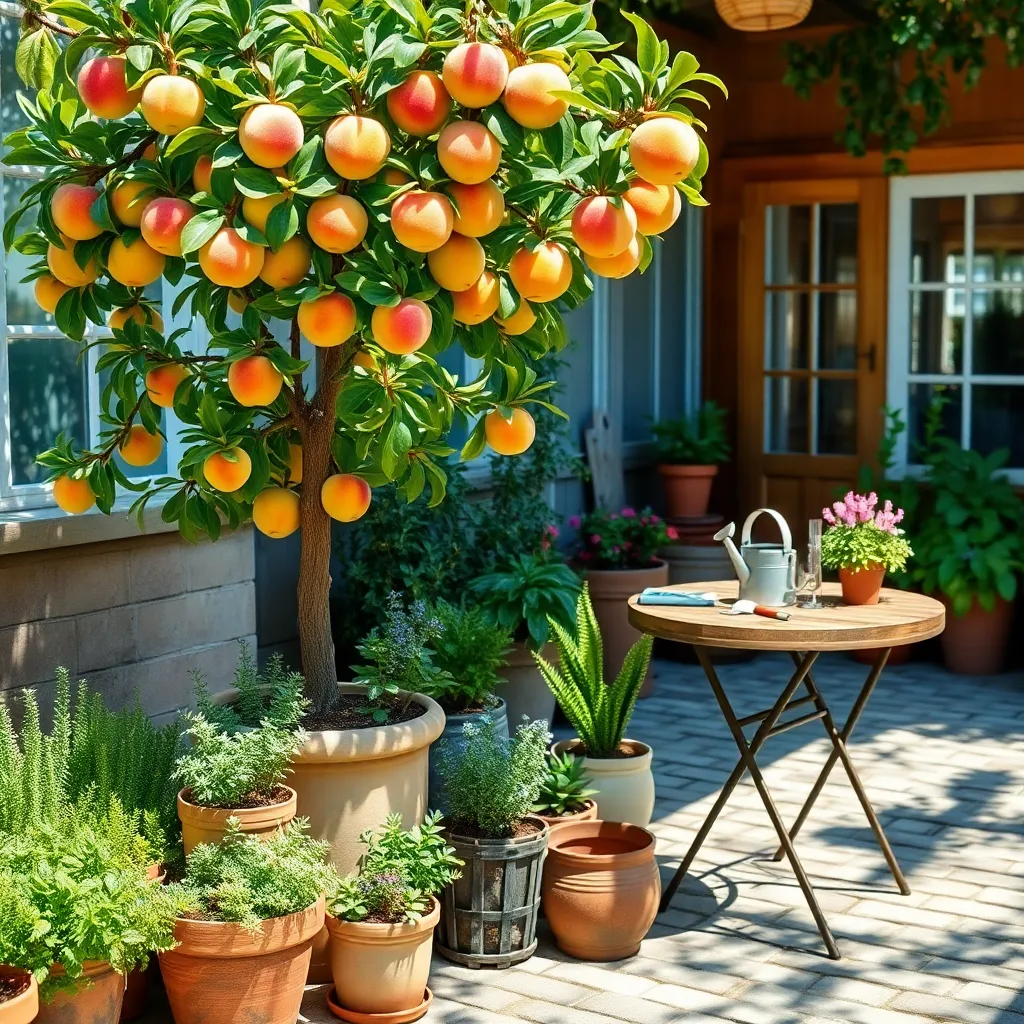
Patio peach trees are a wonderful option for small garden spaces, offering both beauty and fruitfulness in a compact form. These trees are self-fertile, meaning you only need one tree to enjoy a bountiful harvest of juicy peaches.
When growing patio peach trees in containers, choose a pot that is at least 18 inches wide to allow for adequate root expansion. Use a well-draining potting mix enriched with organic matter to ensure the tree has the nutrients it needs to thrive.
These trees thrive in full sun, so place your container in a location that receives at least six hours of direct sunlight daily. Regular watering is crucial, especially during the growing season, so ensure that the soil remains consistently moist but not waterlogged.
For optimal growth, feed your patio peach tree with a balanced, slow-release fertilizer formulated for fruit trees in early spring. Prune lightly after fruiting to maintain shape and encourage new growth, keeping in mind that these trees are naturally compact and require minimal pruning.
Compact Fig Varieties (Low Maintenance and High Yield)
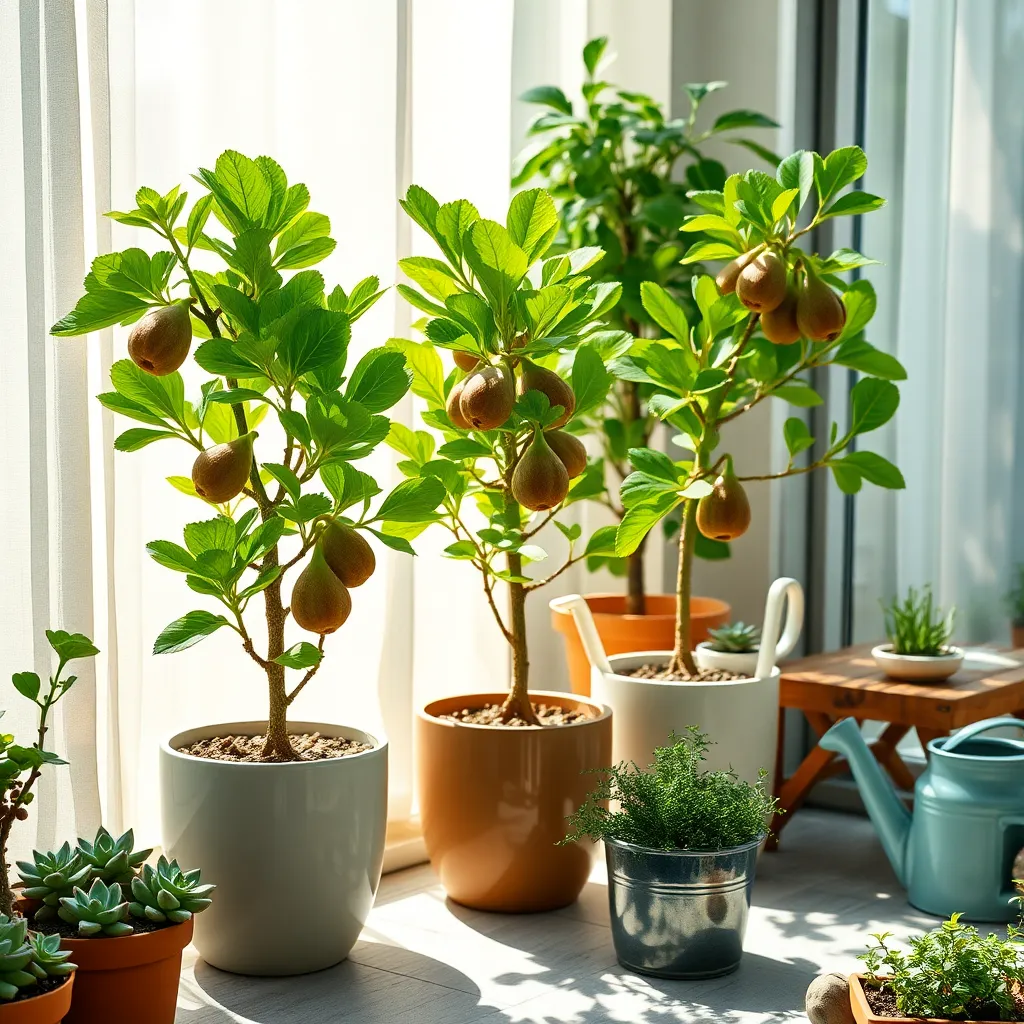
Compact fig varieties are perfect for small spaces, offering both low maintenance and high yield. These trees can easily be grown in containers, making them ideal for patios or small gardens. To ensure healthy growth, use a well-draining potting mix that retains moisture but prevents waterlogging. Figs thrive in full sun, so place them in a location where they’ll receive at least six hours of sunlight daily.
Regular watering is essential, especially during the growing season, but avoid overwatering as figs prefer slightly dry conditions between waterings. A simple way to check if your fig tree needs water is to stick your finger into the soil; if it’s dry about an inch down, it’s time to water. Fertilize your fig tree in early spring and again in midsummer with a balanced fertilizer to promote fruit production. Pruning is minimal, typically only needed to remove dead or crossing branches in late winter or early spring.
For gardeners in colder climates, consider bringing your potted fig indoors during the winter months to protect it from frost. When moving the plant indoors, place it near a sunny window and reduce watering to prevent root rot. If you notice yellowing leaves, it might be a sign of overwatering or poor drainage, so adjust your watering schedule accordingly. Additionally, keeping an eye out for pests like aphids or scale insects will help maintain a healthy fig tree.
Advanced gardeners might experiment with different fig varieties like ‘Petite Negra’ or ‘Little Miss Figgy’, known for their compact growth and abundant fruit production. These varieties not only fit perfectly in small spaces but also offer delicious fruit that can be enjoyed fresh or used in recipes. To maximize yield, ensure your fig tree is properly pollinated, although many varieties are self-pollinating, which makes them even more convenient for small space gardening. Whether you’re a beginner or an experienced gardener, compact fig trees offer a satisfying and productive addition to your garden.
Dwarf Pomegranate Trees (Exotic Appeal on a Smaller Scale)
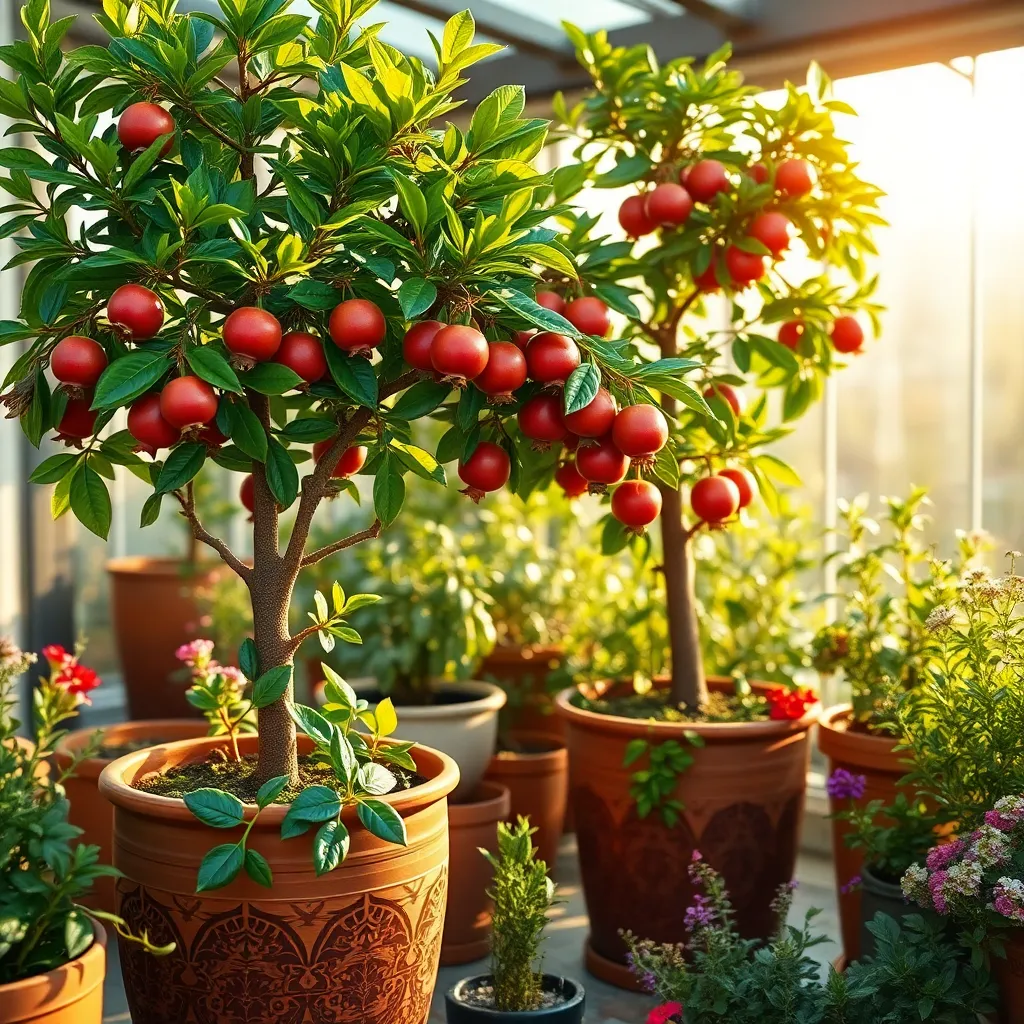
Dwarf pomegranate trees are a delightful choice for those seeking exotic appeal in limited spaces. These compact trees, reaching only 3 to 4 feet in height, are perfect for patios, balconies, or small garden beds.
To thrive, dwarf pomegranates require a location with full sun exposure for at least 6 hours a day. They prefer well-draining soil with a slightly acidic to neutral pH, so consider adding organic matter like compost to enhance soil quality.
Watering should be consistent, especially during the growing season, but ensure the soil does not become waterlogged. A good rule of thumb is to water deeply once a week, allowing the top inch of soil to dry out between waterings to prevent root rot.
Although dwarf pomegranates are relatively low-maintenance, pruning is essential to maintain their shape and encourage fruit production. Prune annually in late winter, removing any dead or crossing branches to improve airflow and sunlight penetration.
Cordon Plum Trees (Efficient Use of Limited Space)
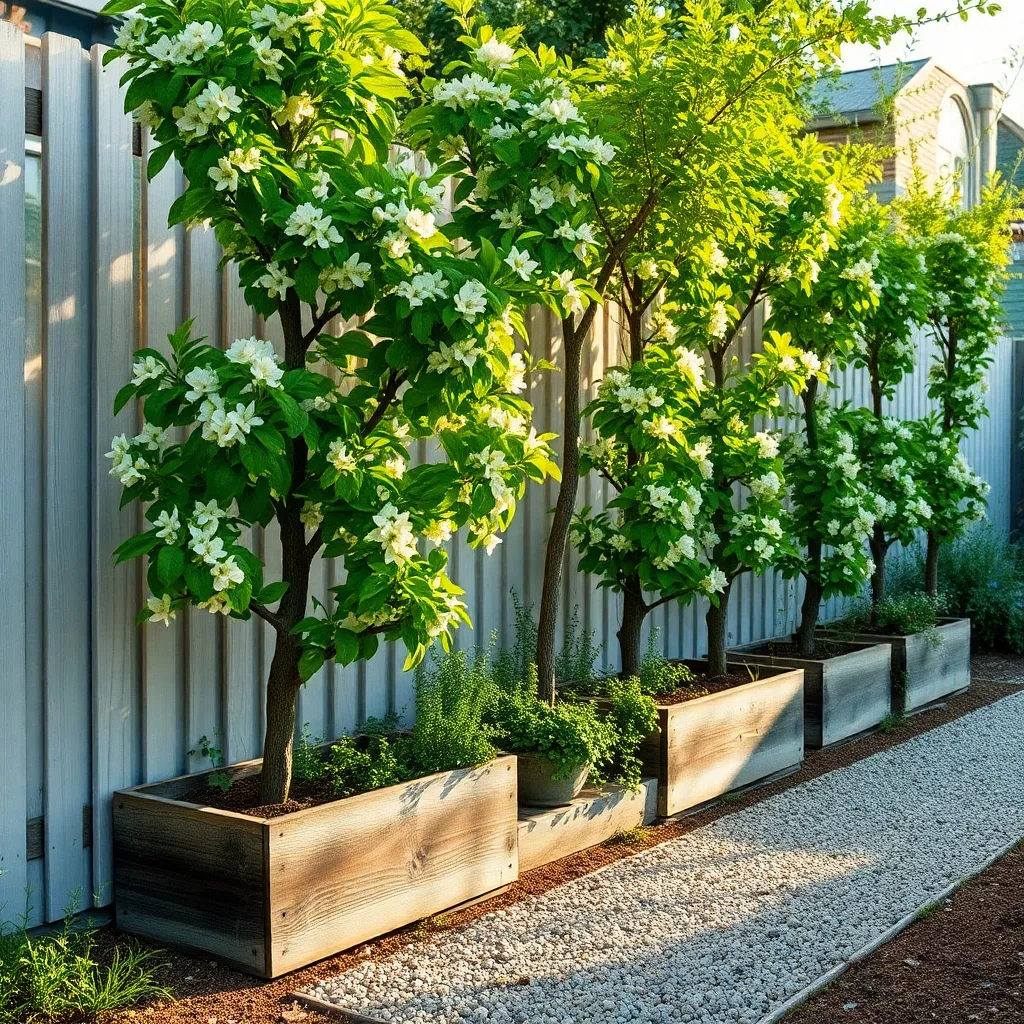
Incorporating cordon plum trees into your small garden is a fantastic way to maximize limited space while enjoying delicious fruit. These trees are trained to grow vertically, making them perfect for tight spots such as patios or narrow garden beds.
To plant a cordon plum tree, ensure you choose a sunny, sheltered location with well-draining soil. Plum trees thrive in fertile loam, so consider enriching your soil with organic compost before planting.
Watering is crucial, especially during the tree’s first year; aim to keep the soil consistently moist but not waterlogged. Once established, these trees require less frequent watering, but during dry spells, a deep soak once a week will suffice.
Prune cordon plum trees regularly to maintain their shape and encourage healthy fruit production. Remove any side shoots and focus on keeping a single, strong central leader to guide the tree’s growth upward.
Bush Apricot Trees (Early Harvest and Easy Care)

Bush Apricot Trees are an excellent choice for gardeners with limited space, providing an early harvest of delicious fruit. These compact trees are not only space-efficient but also require minimal care, making them ideal for both beginners and seasoned gardeners.
To ensure optimal growth, plant your Bush Apricot Trees in well-draining soil with a pH between 6.0 and 7.5. Position them in a sunny location, as apricots thrive with at least 6 to 8 hours of direct sunlight each day.
Regular watering is essential during the growing season, especially in dry spells; aim to keep the soil consistently moist but not waterlogged. Mulching around the base of the tree can help retain moisture and suppress weeds, creating a healthier growing environment.
Pruning is a crucial step in maintaining the health and productivity of your Bush Apricot Trees. Perform light pruning in late winter or early spring to remove any dead or diseased wood, promoting better air circulation and fruit development.
Container-Friendly Citrus Trees (Portable and Productive)
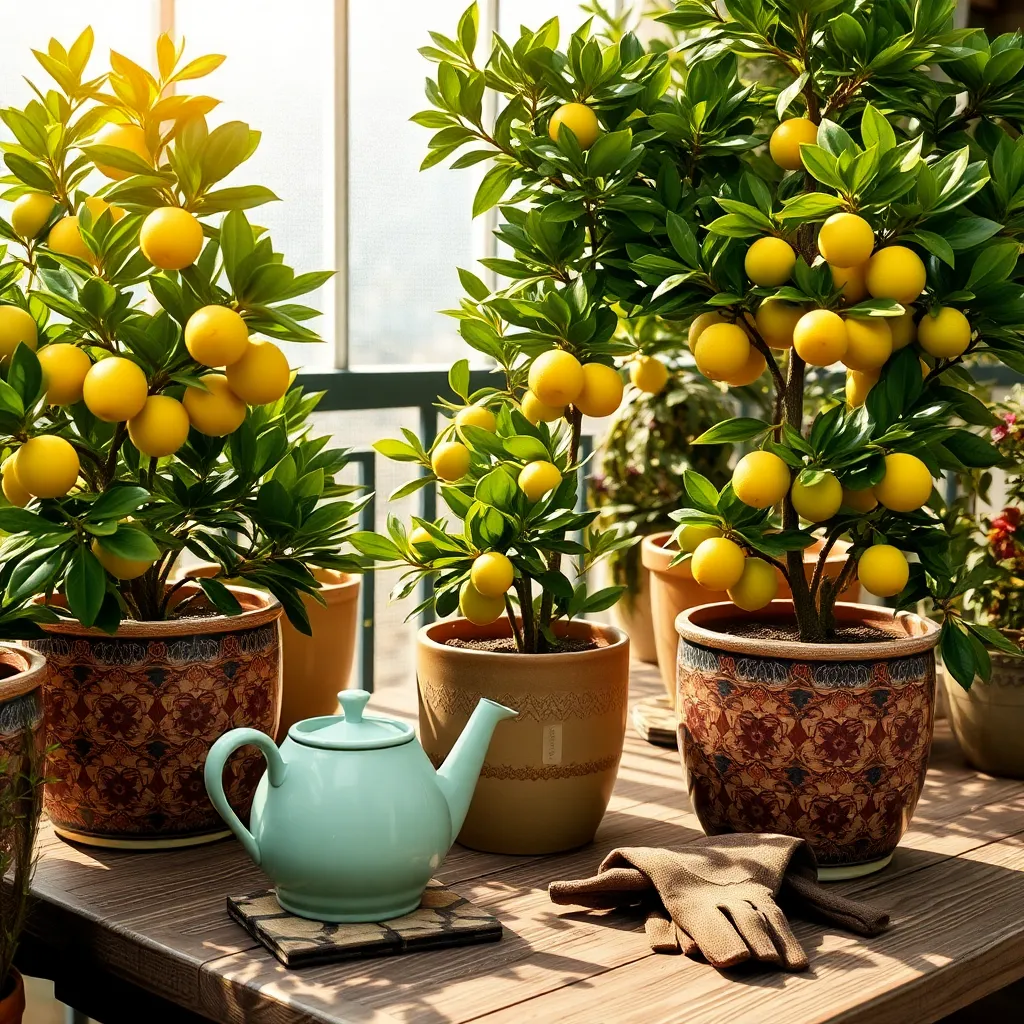
Container-friendly citrus trees are an excellent choice for gardeners with limited space. They allow you to enjoy fresh fruit and the delightful fragrance of citrus blossoms right on your patio or balcony.
Start by selecting a dwarf variety, such as a Meyer lemon or Key lime, which are well-suited for containers. These trees thrive in well-draining potting mix specifically designed for citrus, ensuring healthy root development.
Position your container in a location that receives at least six to eight hours of direct sunlight each day. Regular watering is crucial, but be careful not to overwater; allow the top inch of soil to dry out between waterings to prevent root rot.
For optimal growth, feed your citrus trees with a balanced, slow-release fertilizer formulated for citrus plants. In the colder months, move your container indoors or to a sheltered area to protect it from frost, ensuring year-round productivity.
Conclusion: Growing Success with These Plants
In exploring the “Top 10 Fruit Trees For Small Spaces,” we’ve delved into ten key relationship concepts, each symbolized by a unique fruit tree: adaptability (dwarf apple), nurturing growth (fig), patience (lemon), balance (pear), resilience (peach), harmony (apricot), communication (plum), trust (cherry), commitment (olive), and renewal (pomegranate). These principles are the seeds that, when cultivated with care, will flourish into a thriving relationship, even in the smallest of spaces.
As an actionable next step, choose one of these principles to focus on today. Perhaps you will work on communication by having an open conversation with your partner, or nurture growth by supporting each other’s dreams.
To continue nurturing your relationship garden, bookmark this article for future reference. It can serve as a guide whenever you need to rejuvenate your connection.
Remember, successful relationships are not built overnight but cultivated over time. By integrating these principles, you’re planting the seeds for a fulfilling and enduring partnership. Embrace this journey with optimism and watch your relationship bloom like a well-tended orchard. Save this article as a reminder of the fruitful path ahead. 🌳❤️

